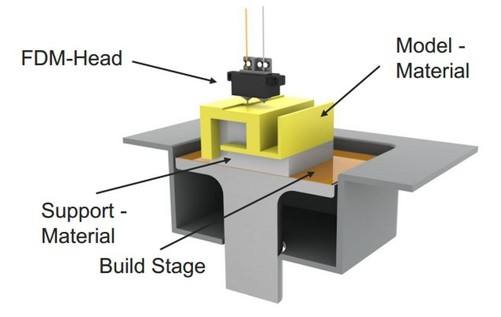中文
ENGLISH
中文
ENGLISH
3D Printing has lots of technology types, such FDM, SLA, SLS…. FDM is currently the most widely used 3D printing technology in the world.
FDM is a process fused deposition manufacturing technology in 3D Printing, which was successfully developed by American scholar Scott Crump in 1988. The basic principle is to feed thermoplastic materials, such as PLA, ABS, PC, nylon, etc., in the form of filaments, heat and melt them into micron-sized filaments at the nozzle, and follow the movement of the nozzle, according to the preset 3D model cross-sectional profile Extrusion, solidification, vowin.cn/en/News/news1251.html' target='_blank'>vowin.cn/' target='_blank'>molding, stacking, and finally forming a 3D object.

FDM materials are generally thermoplastic materials, such as wax, ABS, nylon and so on. Feed in filaments. The material is heated and melted in the nozzle. The nozzle moves along the part's cross-sectional contour and filling track, and at the same time extrudes the molten material, the material solidifies rapidly and condenses with the surrounding material.
Advantages of FDM 3D Printing
1. Due to the simple structure and operation of the hot melt extrusion head system, the maintenance cost is low and the system is safe to operate;
2. The molding speed is slow, and the products produced by the fused deposition method do not need the scraper reprocessing process in the SLA 3D Printing;
3. Part prototypes formed with wax can be directly used for investment casting;
4. It can form parts of any degree of complexity, and is often used to form parts with very complicated cavities and holes;
5. There is no chemical change in the raw material during the molding process, and the warpage of the part is small;
6. High raw material utilization rate and long material life.
The disadvantages of FDM 3D Printing
1. The surface of the molded part has obvious stripes and roughness, which is not suitable for the application of high precision and fine small parts;
2. The strength along the vertical direction of the forming axis is relatively weak;
3. Need to design and manufacture supporting structures;
4. It is necessary to scan and coat the entire section, which takes a long time to form;
5. Support removal is relatively troublesome


